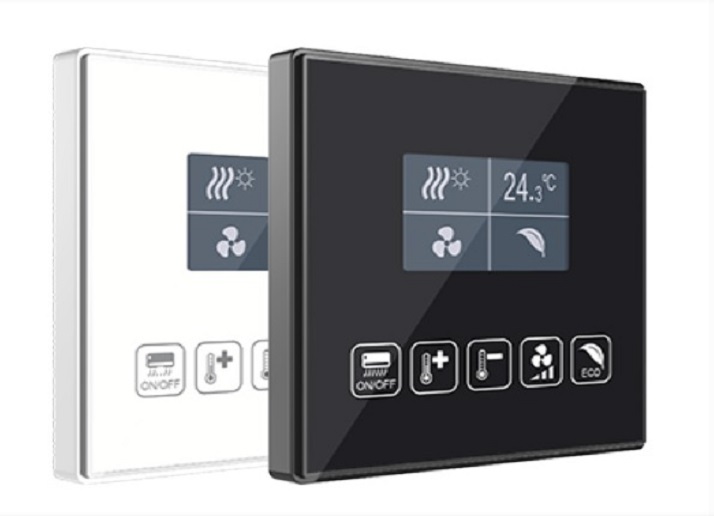What Are the Advantages of Using Capacitive Touch Switches?
What are Capacitive Switches?
A capacitive switch is a type of touch-controlled electrical switch that operates by measuring change in capacitance. It works in the same manner as a typical capacitive smartphone: when you touch the surface, a small electrical charge is transferred from your body to the switch, which subsequently causes a change in capacitance. The switch detects this change, responding with the appropriate command.
Upon touching a capacitive switch, this electrical charge disturbs the switch’s own electrical charge; thus, causing a change in capacitance. Because of this change, the switch can identify when and where the touch occurred.
Capacitive Switch Construction:
A capacitive switch consists of three main layers, the graphic overlay, the circuit, and the backer:
- The overlay consists of the graphic artwork and can also include windows, embossing, coatings, adhesives, and selective texturing.
- The circuit switch will either be a Flexible Printed Circuit or a Printed Circuit Board.
- The backer is the final part of the capacitive switch, and may or may not include an adhesive that must bond to your specific substrate. The most common materials used for overlays are plastic, acrylic, and glass due to their durability and versatility.
Capacitive touch switches are widely used in aerospace, military equipment, medical instruments, intelligence control, commercial appliances, security products, etc. Capacitive touch interfaces are also widely used in the fields of consumer electronics, household appliances, car security system, LED application, lamps lighting decoration application, solar photovoltaic application, sound, mobile terminal tablets, etc.
Major Features of Capacitive Switches:
- Beautiful and aesthetically appealing appearance; strong graphic clarity; straight-forward design.
- Sealed design ensuring top performance and wear resistance; anti-fade and non-deformation; long life span.
- Waterproof and anti-interference.
- No metal contact; simple structure; low cost.
- Operation comfort; excellent sensitivity.
- It can realize intellectualization and operate more conveniently.
- Its reliability can replace various panels, such as metal keypads, membrane keypads, etc.
Product Advantages:
There are no mechanical components in a capacitive switch, resulting in a longer lifespan when compared to their mechanical counterpart. Additionally, capacitive switches can withstand some of the harshest environments, including outdoor environments. If the intrusion of dirt, dust or moisture is a concern, capacitive is probably the best option for an electrical switch.
The key thing to remember about capacitive switches is that they require direct contact with a conductive object to operate. This is why using a stylus typically won’t work (unless it’s a capacitive stylus). Capacitive touch control switches can actually detect the touch of a finger through more than 20mm thick of an insulating material shell, such as tempered glass or plastic film. It ensures that the product’s sensitivity, stability, reliability are not changed with ambient conditions and long-term use, and has the waterproof and anti-interference ability.
Capacitive touch control switches do not require the user to touch metal directly, which can eliminate potential safety hazard. The part of touch circuit is placed on the back of insulating material shell, it is easy to make a keypad sealed with the surroundings. It has no any mechanical components, doesn’t wear out, has long a lifespan, and can reduce the later maintenance costs.


